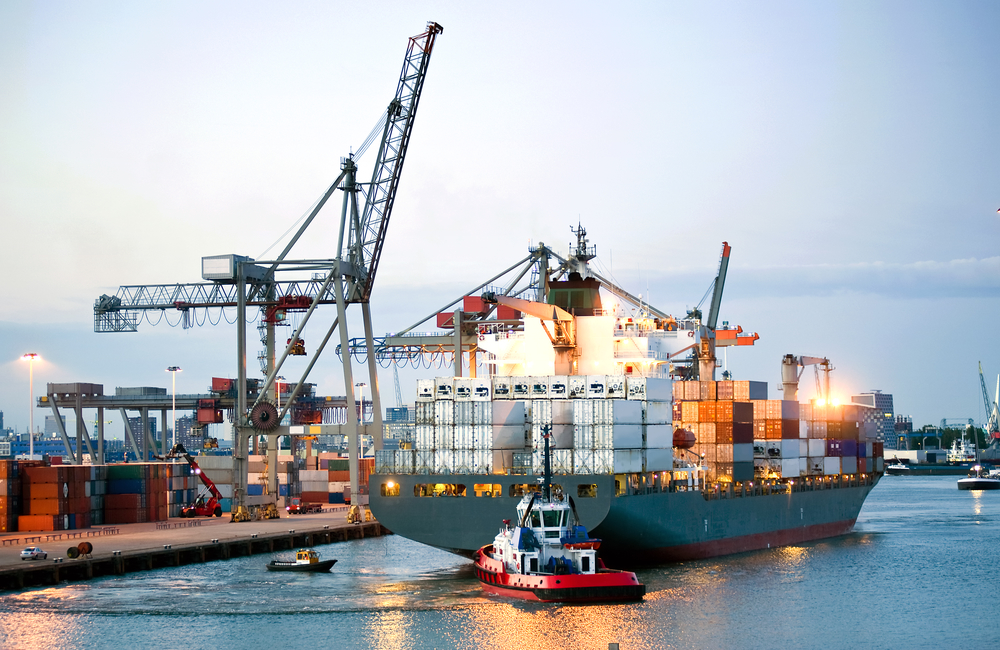

Not local? No problem! The amazing thing about eCommerce is that it allows online sellers to reach any customer, no matter where they are in the world. However, there are some rules you’ll need to abide by when you’re shipping internationally from the United States. When you ship products internationally from the US, you’ll likely need to file with the Automated Export System if your products are of high value ($2,500 or greater). This guide breaks down the process behind submitting an AES export filing, explains why shippers need to file, and provides some tips for when it comes time to file your export shipment.
What is the Automated Export System (AES)?
The Automated Export System (or AES, for short) is the primary instrument that the US Census Bureau uses to collect data on US exports. Once the Census Bureau obtains this information, it becomes part of a greater statistic that the United States uses to compile its position on merchandise trade. That’s basically all fancy talk for saying that when you submit an AES export filing, your shipment contributes to the total United States Gross Domestic Product! Pretty cool, right?
US Customs and Border Protection (CBP) also uses data they get from AES filings to ensure compliance with United States export policies and regulations. This data helps CBP make sure our country’s exports don’t end up with entities that could inflict harm on the United States or its interests abroad. You don’t want that to happen, which is yet another reason why filing with AES is super important.
Filing Your AES Export
Companies need to file their export shipment electronically using a system called AESDirect. Shippers can access AESDirect through the Automated Commercial Environment on the Census Bureau’s website, or ACE. All the information that you file is known as Electronic Export Information (or EEI, for short). If this all sounds pretty confusing to you, it’s because it is. So, to help spearhead things a bit, we’ve listed out the main steps to get started here:
- Apply for an ACE Exporter Account (if you don’t already have one)
- In order to properly register, you’ll need to provide an Employer Identification Number (EIN). If you don’t currently have one, you can apply for an EIN number on the IRS’ website.
- Login to the ACE Portal once you set up your account
- Click Submit AESDirect Filings. Then, on the AESDirect screen, click Create Export Filing.
- Follow the prompts and fill in the necessary info for the following sections:
- Shipment
- Parties
- Commodities
- Transportation
Pro Tip: The Census Bureau’s website states that you must use Internet Explorer version 10 or higher, and you need to disable your browser’s pop-up blocker.
Make Sure Your Items are Worth $2,500 or More…and Pay Attention to Their Country of Origin
You’ll need to submit an AES filing if the value of your goods are $2,500 or more. Also, the origin of the goods makes a difference in whether or not you need to file. For example, if you’re shipping out goods worth a total $3,000 that all originated from the United States or from another foreign country, you will be required to submit an AES export filing. On the other hand, however, if you ship $3,000 worth of goods in which $1,000 of those goods originated in the United States and the other $2,000 came from a foreign country, you won’t need to file with AES.
Basically, here’s the rule of thumb: submit an AES export filing when the value of goods originating from a single country in a shipment reaches $2,500 or higher. Sometimes, you may even need to submit multiple filings for the same shipment! For example, this could be the case if you’re shipping one $3,000 watch from the United States and another $3,000 watch from Switzerland in the same box.
Properly Classifying Your Products with the Right Codes
When submitting an AES filing, it’s crucial to properly classify your products and identify them with the appropriate Harmonized System Codes (or HS, for short). Two example of HS codes are:
- 970190 – Artwork; collages and similar decorative plaques
- 420330 – Clothing accessories; belts and bandoliers, of leather or of composition leather
We’ll save you a ton of time here. If you’re unsure of what classification your product belongs to, visit the Foreign Trade website and enter keywords in the search box to find the appropriate HS code.
When to File
Generally speaking, the US Census Bureau recommends filing anywhere between 1-24 hours before the actual export of the product. Our suggestion? Just take care of it right after you buy your shipping label (if you plan on shipping that day or the following day, that is).
Pro Tip: If you’re thinking that you might get away with not submitting an AES export filing, think again! You can get fined up to a maximum of $10,000 per violation for failing to file through AES or for filing incorrect information. Yikes!
You Don’t Need to File When Shipping to Canada
The filing process also varies depending on the country you’re shipping to. For example, you don’t need to file with the AES if you’re shipping to Canada. However, Canada is the exception, not the rule. You’ll still need to file with AES when shipping to 99% of other foreign countries (assuming we are able to ship to them in the first place—sorry, North Korea).
You Don’t Have to Go It Alone
Filing with AES is an undoubtedly complicated process at the end of the day, no matter which carrier you typically ship with. Therefore, it may be a good idea to invest in hiring a company like Shipping Solutions to help file your AES export forms on your behalf. Shipping Solutions isn’t like other online shipping software companies that sell discounted shipping labels, per se. Rather, they do things like take the Electronic Export Information you’ve entered to create export documents that you can quickly upload to AESDirect. They also run preliminary checks on your data to make sure you aren’t missing any vital information when submitting your filings.
All in all, Shipping Solutions specializes in filing export documentation for shippers so you can keep focusing on doing what you do best: running your business.
Signing up with Shipping Solutions and paying for one of their pricing tiers may be well worth saving the time (and headache) if you sell a lot of high-value items internationally. The best part is, you can use Shipping Solutions’ services and use shipping software to buy discounted postage online at the same time! Work smarter, not harder, people.
Have Any Questions?
If you have any questions regarding the whole AES export filing process, you’re not alone! It’s a confusing process, and it can leave even the most seasoned shippers scratching their heads. So, your best bet for getting accurate answers is to contact the Census Bureau directly. Here are two different options:
- For questions regarding your ACE account, call the ACE Account Service Desk at (866) 530-4172, option 1.
- For questions about EEI filings, call the U.S. Census Bureau’s Data Collection Branch at (800) 549-0595, option 1.


Nancie
If I have a shipment of different items (nutritionals, water filters..etc…) is the $2500.00 per item or per shipment?
Thank you
Amy
How do I know if I need an export license?
Rockwell Sands
Hi, Amy! Generally speaking, you’ll need to submit an AES filing if the value of your goods in an international shipment is $2,500 or more. For example, you’ll need to submit a filing if you’re shipping a painting valued at $3,000. Hope that clears some things up for you!
Amy
Thank you for the quick response. How is the ITN Number relating the to AES filing for an export license different from an AES Exemption?
Rockwell Sands
So, ITN stands for Internal Transaction Number, and that’s the number that gets assigned to your shipment once it’s been accepted and is on file with the AES. An AES Exemption, on the other hand, is a code that indicates the reason why you did not need to file electronic export information (or EEI, as it’s sometimes called).